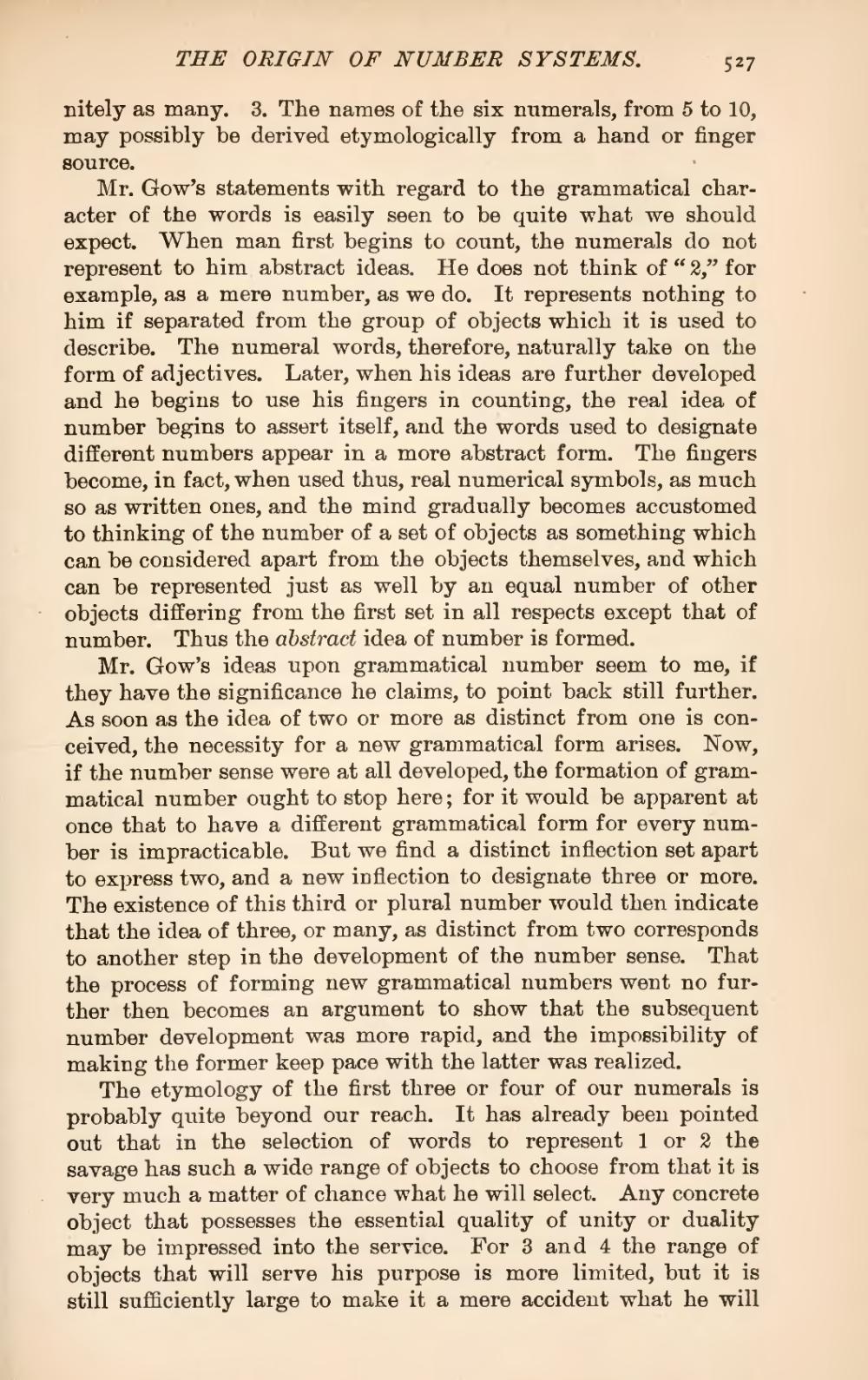nitely as many. 3. The names of the six numerals, from 5 to 10, may possibly be derived etymologically from a hand or finger source.
Mr. Gow's statements with regard to the grammatical character of the words is easily seen to be quite what we should expect. When man first begins to count, the numerals do not represent to him abstract ideas. He does not think of "2," for example, as a mere number, as we do. It represents nothing to him if separated from the group of objects which it is used to describe. The numeral words, therefore, naturally take on the form of adjectives. Later, when his ideas are further developed and he begins to use his fingers in counting, the real idea of number begins to assert itself, and the words used to designate different numbers appear in a more abstract form. The fingers become, in fact, when used thus, real numerical symbols, as much so as written ones, and the mind gradually becomes accustomed to thinking of the number of a set of objects as something which can be considered apart from the objects themselves, and which can be represented just as well by an equal number of other objects differing from the first set in all respects except that of number. Thus the abstract idea of number is formed.
Mr. Gow's ideas upon grammatical number seem to me, if they have the significance he claims, to point back still further. As soon as the idea of two or more as distinct from one is conceived, the necessity for a new grammatical form arises. Now, if the number sense were at all developed, the formation of grammatical number ought to stop here; for it would be apparent at once that to have a different grammatical form for every number is impracticable. But we find a distinct inflection set apart to express two, and a new inflection to designate three or more. The existence of this third or plural number would then indicate that the idea of three, or many, as distinct from two corresponds to another step in the development of the number sense. That the process of forming new grammatical numbers went no further then becomes an argument to show that the subsequent number development was more rapid, and the impossibility of making the former keep pace with the latter was realized.
The etymology of the first three or four of our numerals is probably quite beyond our reach. It has already been pointed out that in the selection of words to represent 1 or 2 the savage has such a wide range of objects to choose from that it is very much a matter of chance what he will select. Any concrete object that possesses the essential quality of unity or duality may be impressed into the service. For 3 and 4 the range of objects that will serve his purpose is more limited, but it is still sufficiently large to make it a mere accident what he will

